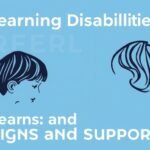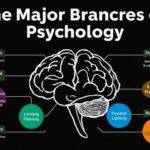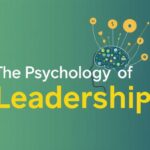The phrase “haut potentiel intellectuel” — often shortened to HPI — carries with it a certain mystique. For many, it conjures images of prodigies, innovators, and lightning-fast minds that breeze through school and breeze past obstacles. For others, it evokes a different picture: a restless, intense inner life, misfit social interactions, and the frustration of feeling “different” in a world that prizes conformity. In this article we’ll walk through what HPI really means, how it shows up across the lifespan, and whether it functions more often as an atout (asset) or a fardeau (burden). We’ll speak plainly about common myths, practical strategies, and the emotional realities of living with intellectual giftedness and related traits such as overexcitabilities, asynchronous development, and the complexities of double exceptionality.
Before you read on, know this: HPI is not a single, neat box you either fit into or not. It’s a cluster of tendencies — cognitive, emotional, and sometimes sensory — that interact with environment, supports, and individual personality. Part of the fascination and challenge of HPI is precisely that variability. Some people with high IQs sail through life with relative ease; others struggle in surprising ways. Our goal here is to give you a rounded understanding so you can spot strengths, recognize vulnerabilities, and make choices that turn potential into genuine flourishing.
What does “Haut potentiel intellectuel” actually mean?
HPI is a French-language term used to describe intellectual giftedness. At its most basic, it refers to notably high intellectual abilities compared with the general population. Those abilities are often measured by standardized IQ testing or psychometric evaluation. But HPI isn’t only IQ. It commonly involves quick learning, deep curiosity, intense focus on subjects of interest, and a capacity for complex, abstract thinking. In French contexts the term douance is also used, and in English-speaking settings you’ll hear “giftedness” or “intellectual giftedness.”
It’s important to separate the label from the person. An IQ score is a snapshot of certain cognitive abilities at a moment in time; it does not define a person’s worth, moral character, or potential for happiness. In practice, many people with HPI display what professionals call asynchronous development: their cognitive maturity might be advanced, while social and emotional development can lag or follow a different timeline. This mismatch often causes friction in school environments or peer relationships, where expectations are set by age rather than by profile of strengths.
Common characteristics associated with HPI
People with HPI often show a recognizable set of traits, though not every person will have every trait. Here are some commonly observed features:
- Rapid learning and strong memory for topics of interest.
- Deep curiosity and a tendency to ask many questions.
- Intense emotional responses and sensitivity — sometimes called emotional intensity.
- Advanced vocabulary and nuanced use of language.
- Tendency toward perfectionism and high self-expectations.
- Possible asynchronous development: cognitive skills may outpace social or emotional skills.
- Occasional underachievement when schoolwork doesn’t match cognitive needs or motivation.
Some of these traits are strengths in the right, supportive environment. Others can become sources of stress if unrecognized or unsupported.
How is HPI diagnosed and assessed?
Diagnosis typically involves a psychometric evaluation by a psychologist trained in assessing intellectual giftedness. The process often includes standardized IQ testing — such as the Wechsler scales — plus interviews, behavioral observations, and sometimes questionnaires completed by parents or teachers. The goal is to get a rounded picture: cognitive profile, learning styles, emotional functioning, and any coexisting conditions.
In addition to IQ scores, professionals may look for signs of overexcitabilities — heightened responsiveness in domains like intellectual, emotional, imaginational, psychomotor, or sensory experience. Overexcitabilities can make life richer but also more intense and draining. Clinicians also screen for double exceptionality (2e), where a person is both gifted and has a learning disability, ADHD, autism spectrum traits, or mental health challenges. Double exceptionality can be particularly tricky because a high IQ can mask underlying learning difficulties, or vice versa.
What IQ level is usually considered “gifted”?
While cutoffs vary, many practitioners use an IQ of roughly 130 or above (about the top 2–3% of the population) as a working threshold for giftedness or HPI. However, some jurisdictions or programs use lower or higher thresholds, and IQ is not the only criterion. Contextual evidence — like exceptional creativity, advanced reading or mathematical skills, or unusual problem-solving ability — may also inform the assessment.
HPI in childhood: school, social life, and family dynamics
For children with HPI, school can be a place of celebration or of deep boredom. When curriculum matches their pace and depth of interest, they often thrive: they ask richer questions, create advanced projects, and can act as intellectual catalysts for classmates. But when the classroom is repetitive, restrictive, or focused on rote learning, gifted children can disengage, underperform, or act out. They may be labeled “lazy,” “disruptive,” or “too sensitive,” when in fact they’re starved for intellectual challenge and emotional understanding.
At the social level, many gifted children feel different from their peers. Their interests might skew toward older peers or adult topics; their humor and speech may be more advanced; their sense of justice and moral reasoning may come earlier than expected. These differences can make forming friendships tricky. In some cases, gifted kids minimize or hide their abilities to fit in, a phenomenon sometimes called “playing down” giftedness.
Family dynamics can be complex too. Parents may feel pride, pressure, or confusion. Siblings might react with jealousy or indifference. Families that understand asynchronous development — that a child can be intellectually capable yet emotionally fragile — often fare better. Clear communication, realistic expectations, and a focus on the child’s well-being rather than only academic performance are essential.
Strategies for supporting gifted children
Support can be practical and emotional. Schools and parents can use a mix of enrichment and acceleration strategies tailored to the child:
- Academic differentiation: provide more complex tasks, independent research projects, or higher-level materials within the classroom.
- Acceleration: allow grade-skipping or subject-specific advancement where appropriate.
- Enrichment programs and extracurriculars: offer depth in a subject of passion (e.g., coding clubs, math competitions, creative writing workshops).
- Social-emotional learning: teach coping strategies for perfectionism, anxiety, and intense emotions.
- Encourage peer groups with similar interests — not necessarily same-age peers — to reduce feelings of isolation.
Quality matters: misapplied acceleration without social and emotional support can backfire; enrichment must be meaningful, not just “more of the same.” The best interventions are holistic and responsive to the child’s temperament and context.
HPI in adolescence and young adulthood: identity, expectations, and mental health
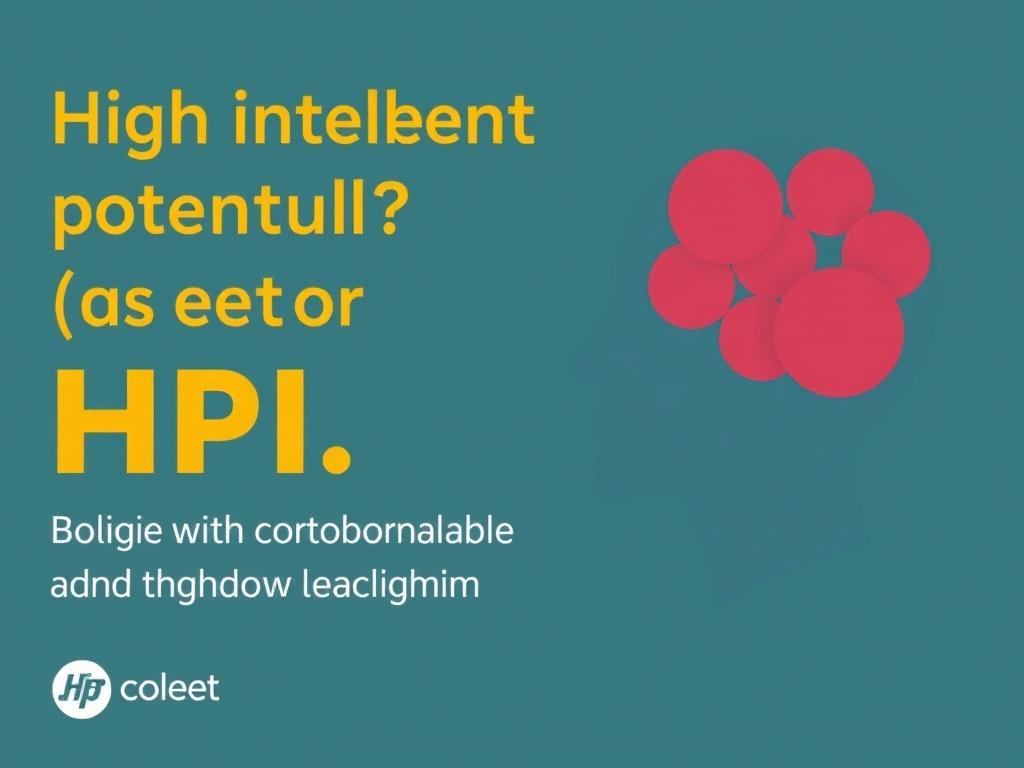
Adolescence is a pivotal time for identity formation, and for gifted adolescents it often raises unique questions. A teenager with HPI may confront pressure to “succeed” academically while wrestling with existential questions earlier than their peers. Emotional intensity and perfectionism can fuel anxiety, depression, or burnout. Increased self-awareness sometimes leads to impostor syndrome: the fear that one’s achievements are unearned or fragile.
Young adults with HPI may also find the transition to higher education or the workforce a reality check. University can be liberating for some — offering depth and like-minded peers — but it can also reveal that intellectual ability alone doesn’t guarantee satisfaction or success. Social networks, emotional regulation skills, and vocational fit play major roles.
Mental health considerations
Emotional intensity is common in HPI and may manifest as heightened sensitivity to criticism, strong empathy, or intense mood swings. For some individuals this coexists with clinical conditions like anxiety disorders, major depression, obsessive-compulsive tendencies, ADHD, or autism spectrum conditions. When such conditions co-occur, the term double exceptionality (2e) becomes relevant. Often, the giftedness can mask symptoms (e.g., a bright student compensates for ADHD) or the symptoms can mask giftedness (e.g., a student with anxiety underperforms).
Mental health support is crucial. Counseling that understands giftedness helps individuals navigate identity, perfectionism, social dynamics, and career choices. Cognitive-behavioral strategies, mindfulness, and peer support groups tailored to gifted adults can be helpful.
HPI at work: strengths, pitfalls, and career fit
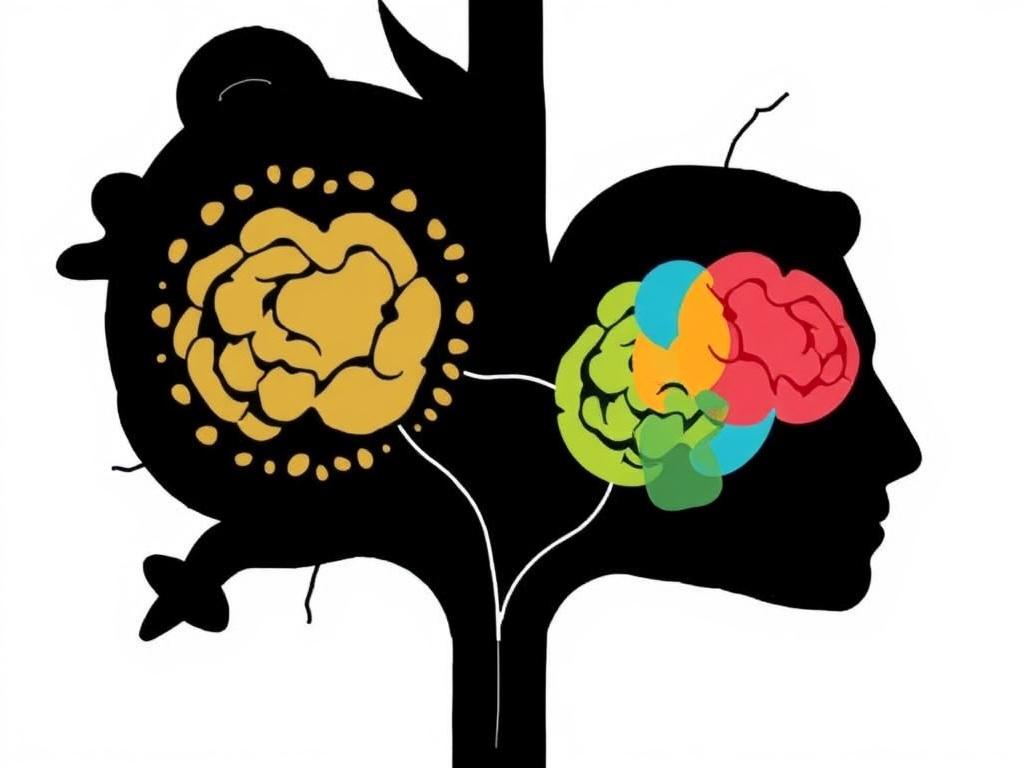
In professional settings, HPI can be an asset when work matches cognitive style and values. People with HPI often excel in roles requiring deep problem-solving, innovation, strategic thinking, and the ability to learn new concepts quickly. They can be powerful contributors in research, technology, education, arts, entrepreneurship, and leadership.
However, workplace challenges include frustration with bureaucratic constraints, boredom in repetitive tasks, and sensitivity to workplace politics. Perfectionism and fear of failure can make delegation hard and decision-making slow. Some gifted employees may jump from job to job searching for the right fit, while others may “hide” their abilities to avoid social friction.
Finding good vocational fit
A satisfying career for someone with HPI usually combines intellectual challenge, autonomy, and meaning. Practical steps include:
- Assess strengths and values, not just interests — a deep thinker may value social impact over prestige.
- Seek roles that offer project variety and autonomy rather than strict routine.
- Develop soft skills: emotional intelligence, communication, and team collaboration.
- Consider entrepreneurship or research roles that reward independent thinking.
Workplaces that nurture creativity and provide growth paths are more likely to retain gifted employees.
Myths and misconceptions about HPI
Let’s debunk a few persistent myths.
Myth: High IQ equals automatic success and happiness
Reality: Intelligence is just one factor among many (emotional regulation, social skills, persistence, opportunity, and luck). Many intellectually gifted individuals struggle with depression, relationship issues, or underachievement.
Myth: Gifted children will “figure it out” and don’t need special support
Reality: Support is often crucial. Without appropriate challenge, gifted children may become bored, disengaged, or develop behavioral issues. Emotional support is equally important because heightened sensitivity can create unique vulnerabilities.
Myth: Gifted people are socially awkward geniuses
Reality: Social profiles vary widely. Some are highly charismatic; others prefer solitude or small, deep relationships. Stereotypes obscure the true diversity of experiences.
Double exceptionality: when strengths and challenges co-occur
Double exceptionality (2e) refers to individuals who are gifted and also have one or more coexisting disabilities, such as ADHD, dyslexia, autism, or sensory processing issues. This combination can create confusing profiles: strong reasoning skills paired with inconsistent academic performance or specific learning challenges.
Diagnosing double exceptionality requires careful assessment. Standard educational supports might not be sufficient if they address only the disability without nurturing the giftedness, or vice versa. For instance, a student with dyslexia and HPI might be brilliant verbally and conceptually yet struggle with reading speed — accommodations like assistive technology, targeted remediation, and enrichment in strength areas are often needed.
Educational implications for 2e learners
Best practices include integrated plans that respect both sides of the profile:
- Individualized Education Plans (IEPs) or similar arrangements that include both accommodations and enrichment.
- Use of technology (text-to-speech, speech-to-text) to level access to learning while pursuing advanced content.
- Collaboration among specialists: educators, psychologists, speech/language therapists, and parents.
Recognizing 2e early reduces the risk of mislabeling and missed potential.
Emotional intensity and overexcitabilities: a closer look
Psychologist Kazimierz Dabrowski introduced the concept of overexcitabilities (OEs), describing heightened sensory, emotional, intellectual, imaginational, or psychomotor responsiveness often seen in gifted individuals. While not everyone with HPI has OEs, these traits help explain some of the intense experiences reported by gifted people.
Emotional overexcitability, for example, can manifest as deep empathy, powerful emotional reactions, and strong moral convictions. Intellectually overexcitable individuals may be insatiably curious, love complex puzzles, and engage in intense internal debate. These traits can be sources of creativity and depth, but also of overwhelm, existential angst, or social friction.
Managing overexcitabilities
Practical coping strategies include:
- Regular routines for sleep, nutrition, and physical activity to reduce sensory overwhelm.
- Mindfulness, grounding exercises, and pacing of intense intellectual activity.
- Safe spaces for emotional processing: therapy, journaling, or supportive peer groups.
- Creative outlets — art, music, writing — to channel imaginational intensity.
Recognizing OEs can help reframe “sensitivity” as a trait to be managed rather than a flaw to be fixed.
Social relationships and intimacy for people with HPI
Forming deep relationships is often both a gift and a challenge for those with HPI. On the one hand, the capacity for empathy and nuanced conversation can create fulfilling friendships and partnerships. On the other, differences in pacing, interests, and expressive style can make connecting with peers tricky.
In romantic relationships, intense expectations and a desire for deep intellectual and emotional compatibility can create high standards. This is not inherently bad — many fruitful partnerships are built on shared curiosity and values — but difficulties arise when perfectionism or unrealistic expectations lead to disappointment.
Navigating social life
Helpful approaches include:
- Seeking friends and partners who appreciate depth, not necessarily identical interests.
- Practicing communication skills and learning to disclose needs about pacing, critique, and emotional intensity.
- Joining interest-based communities rather than age-based ones (book clubs, academic societies, creative workshops).
Often, finding even a few kindred spirits who “get” the way one thinks and feels can change the quality of social life dramatically.
Creativity, innovation, and the role of curiosity
HPI often correlates with creative thought — the ability to combine disparate ideas, hold multiple perspectives, and imagine novel possibilities. When curiosity is nurtured, gifted individuals can be engines of innovation in arts, sciences, and entrepreneurship.
But creativity needs space and time. Systems that demand immediate efficiency or narrow metrics of success may stifle creative potential. The most fertile environments combine freedom, intellectual challenge, and access to mentors who can guide refinement of ideas.
How to cultivate creativity
Practical tips:
- Create unstructured time for exploration and play, especially in childhood.
- Encourage cross-disciplinary learning — novel connections often arise at intersections.
- Mentorship and critique: learn to accept constructive feedback without losing original vision.
- Support risk-taking and tolerate failure as part of the creative process.
A curious mind left to explore is more likely to transform potential into meaningful contributions.
Practical resources and support options
If you or someone you love is exploring a possible HPI diagnosis, a few resources and pathways can help.
| Type of Support | What it Offers | Who It Helps |
|---|---|---|
| Psychometric evaluation | Objective assessment of cognitive profile, identification of strengths and weaknesses | Individuals seeking diagnosis or clearer picture for educational planning |
| School accommodations | Acceleration, enrichment, individualized learning plans | Gifted students needing curriculum fit |
| Therapy & counseling | Emotional regulation, perfectionism, anxiety management | Individuals struggling with mental health in context of HPI |
| Support groups & communities | Peer understanding, shared experiences, practical tips | Families, adolescents, adults seeking connection |
| Enrichment programs | Specialized workshops, competitions, creative labs | Those seeking intellectual challenge and community |
Local educational psychologists, gifted associations, and community centers are good starting points. In many countries there are national organizations offering guidance, parent support groups, and lists of qualified evaluators.
Parenting strategies: raising children with HPI

Parenting a child with HPI can be richly rewarding and occasionally bewildering. Balanced strategies emphasize both intellectual nourishment and emotional safety.
Key parenting tips:
- Value effort, curiosity, and resilience more than grades and test scores.
- Offer choices and autonomy while maintaining consistent boundaries.
- Encourage a growth mindset: mistakes are learning opportunities, not proof of inferiority.
- Model emotional regulation: children learn by watching how adults cope.
- Seek professional support if behavior, mood, or learning issues cause concern.
Parents should also take care of their own emotional needs; supporting a differently wired child can be exhausting without community and self-care.
When HPI becomes a burden — and how to respond
There are moments when high potential feels more like a burden than a gift. Perfectionism, existential worry, social isolation, and burnout can all make life harder. The good news is that these are addressable.
If someone is experiencing chronic anxiety, depression, or severe burnout, professional mental health care is a priority. Therapists who understand HPI can help reframe perfectionism, build coping tools, and develop lifestyle changes to reduce overwhelm. Educational or workplace adjustments — like reducing workload, adding variety, or shifting to more supportive environments — can also relieve chronic stress.
Peer support is invaluable. Finding others who share the experience of HPI — even online — can normalize struggles and provide practical strategies. Mentors who model balance and realistic achievement can offer perspective that pure intellectual role models cannot.
Practical daily strategies
Simple daily practices can make a big difference:
- Set realistic goals and prioritize tasks to avoid perfectionistic paralysis.
- Schedule downtime and creative play to prevent cognitive overload.
- Practice sleep hygiene; cognitive and emotional regulation are deeply affected by rest.
- Use physical activity to regulate mood and energy.
Small, consistent habits often outmatch occasional bursts of hyperproductivity followed by collapse.
Societal perspectives: how culture shapes the experience of HPI
Cultural values deeply influence whether HPI is experienced as an asset or burden. Societies that prize uniformity, rote learning, and strict conformism may marginalize highly divergent thinkers. Conversely, cultures that value innovation, debate, and intellectual curiosity often provide more fertile ground for gifted minds.
Policy also matters. Educational systems that incorporate differentiation and enrichment allow gifted learners to thrive. In countries with limited resources or rigid schooling systems, giftedness can go unsupported, and talented individuals may underachieve or migrate to more supportive environments.
Cultural narratives — the stories we tell about intelligence, success, and worth — shape expectations. Shifting the narrative from “gifted means easy life” to “gifted comes with specific needs and potentials” helps create more compassionate and effective supports.
Personal stories: brief vignettes
To ground this in everyday reality, consider a few fictionalized composites drawn from common themes:
- Emma, 10, reads voraciously and can discuss world politics, but cries when criticized and struggles to make friends at school. With her parents’ help and a small enrichment group, she learns social skills and finds peers who share her passions.
- Luca, 17, is a brilliant programmer who underperforms in humanities because he finds conventional essays stifling. A teacher recommends subject acceleration and project-based assessments — suddenly Luca’s engagement improves.
- Sara, 35, has an advanced degree and a high-pressure job. She experiences intense burnout and anxiety. Therapy, workload adjustments, and creative hobbies help her reconnect with meaning and reduce perfectionism.
These examples illustrate that context, supports, and personal coping strategies shape whether HPI is primarily an atout or a fardeau.
Final considerations: balancing potential and wellbeing
Understanding HPI requires nuance. Intelligence is a tool — powerful but not deterministic. The key to turning potential into fulfillment lies in supportive environments, emotional literacy, and practical strategies that respect both strengths and vulnerabilities. For parents, educators, clinicians, and individuals alike, the goal is to cultivate curiosity while safeguarding mental health, to encourage depth while allowing for play, and to honor intensity while teaching regulation.
We can foster conditions where HPI becomes an atout by recognizing the whole person, not only the score on a psychometric evaluation. That means attending to social needs, emotional development, and the joy of learning itself. It also means acknowledging when giftedness co-occurs with real challenges and responding with integrated support, not myths or simplistic expectations.
Conclusion
Haut potentiel intellectuel (HPI) is neither an unambiguous advantage nor an inevitable burden; its impact depends on context, supports, and how we respond to the emotional and educational needs that often accompany giftedness, so by combining appropriate assessment, tailored education, emotional support, and environments that value curiosity and creativity, people with HPI can harness their strengths while managing vulnerabilities, transforming potential into a genuine asset rather than a weight to carry.



